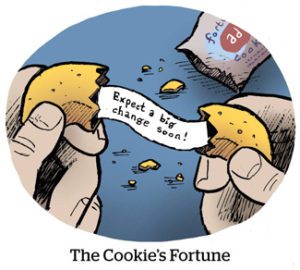 TikTok has become accustomed to Facebook and Instagram stealing its cool new features and video formats. So, it’s a refreshing change to see TikTok pilfer one of Meta’s innovations.
TikTok has become accustomed to Facebook and Instagram stealing its cool new features and video formats. So, it’s a refreshing change to see TikTok pilfer one of Meta’s innovations.
Starting Thursday, TikTok launched the ability to add first-party cookies to its site conversion pixel, which allows advertisers to track site activity and attribute ads across browsers. TikTok also instituted a straight-up requirement that advertisers collect and pass third-party cookies to TikTok.
Facebook began offering businesses a first-party cookie option with the Facebook pixel in late 2019.
The update was previously announced on the company’s Business Help Center page, but only goes live in site tags as of Thursday. TikTok hasn’t broadly announced the update – and no wonder, because third-party cookie collection is a communications minefield – but it’s a major change for advertisers.
“It’s very important,” social advertising consultant David Herrmann told AdExchanger. “The issue with TikTok in-platform has been attribution.”
Previously, TikTok attribution was based on single user sessions. If someone saw multiple ads over time before converting or purchased later on a different browser or device, the conversion wouldn’t connect to the campaign.
Herrmann’s point about TikTok’s “in-platform” attribution issue is important to unpack, because it’s specific to how TikTok – and its ad platform – works.
TikTok understands user behavior on its own platform very well. For comparison, YouTube has an unmatched library of videos to learn, unmatched engineering talent, unmatched everything, but its recommendation algorithm still primarily feeds users videos that they already watched, that are produced by the same accounts or that are almost exact matches of already-viewed content.
No other platform has figured out how to algorithmically source an endless stream of videos that people like, including in some cases suggesting totally new content that just seems to ceaselessly surprise and delight.
Although TikTok’s in-platform capabilities are winning a higher and higher share of overall consumer attention, TikTok hasn’t been as valuable for advertisers who want ad attribution, said Maurice Rahmey, co-founder and CEO of the performance agency Disruptive Digital.
For example, TikTok may do a great job feeding fashion and cooking content to someone who loves those videos, but that isn’t a clear way to know if someone is in-market for new pans or is looking at dresses because they have a wedding coming up.
But picking up a third-party cookie ping for a site visitor to David’s Bridal would give TikTok a strong sense that the visitor is in-market for a related purchase.
“It will be an important change to serve ads based on strong intent signals, not just the viewership model,” Rahmey said.
TikTok also can’t fall back on being the shiny, viral new kid as it did in the past. It’s a fully scaled player now, and advertisers are well past the experimental phase. That means they want mature metrics and aren’t willing to spend on TikTok without being able to demonstrate results.
“I know personally it takes a lot of convincing for clients to fork over money on TikTok without seeing in-platform results,” Herrmann said.
But TikTok has a uniquely positive spin on its third-party cookie strategy, according to Rok Hladnik, CEO of the DTC and social agency Flat Circle. TikTok is far less saddled by legacy tech, whereas for Meta, the disappearance of so many third-party pixel connections in the wake of Apple’s iOS update has laid low its mighty ad platform.
TikTok is starting from the ground up now, Hladnik said. All the third-party cookies it collects via the pixel are pure gravy for its ad platform. The same Apple ATT rules apply to every app, but TikTok is getting smarter and more efficient while Facebook figures out how to get by with Harrison Bergeron-esque handicaps on its ad platform.
“At a surface level, it doesn’t make sense to go down the third-party cookie route when you know cookies are going away,” Rahmey said. “But the opportunity to win and shift ad platform budgets is [happening] right now.”














